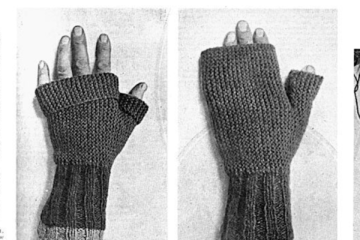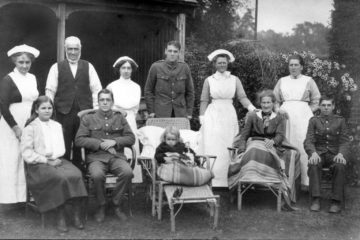Prior to the outbreak of World War One, posters were a commercial luxury, with approximately £125 million being spent annually on advertising in Great Britain to influence people’s buying habits.[1] However, when the Great War was declared, the poster tripled in its importance and became a national necessity.[2] More so than the pamphlet, photograph, or speech, the poster could put into pictures the very real threat of loss in the war. It could create surreal images of what could happen if everyone did not play their part; it could demonstrate success or target the reason for possible failure. The poster artist would try to maintain a forceful, yet not bullying, tone and make sure the audience was to talked to, not down to, for “In war… you must speak a clear language, and one which is not only understood by the limited income or interest groups who may consume your product, but by everyone.”[3]
Poster propaganda was turned into an art form and became more sophisticated than ever before. This meant that the poster was not forced to tell the ‘truth’ – artistic licence was often employed, and “the poster artist…is free to use any device he can think of to subdue his potential opponent, the public.”[4]

When Britain officially entered the First World War at 11pm, 4th August 1914, the armed forces were caught relatively unprepared – at this time, the British Regular Army totaled only 250,000.[5] So, on 8th August, the War Secretary Lord Kitchener launched his appeal for male volunteers, and “the British people entered the First World War with enthusiasm and unquestioning resignation.” [6] The now infamous “Your Country Needs You” poster (fig. a) of Kitchener himself, with his recognisable bushy moustache, and outstretched index finger pointing at the potential recruit, initially encouraged up to 30,000 volunteers a day.[7] Soon these numbers began to dwindle, so recruitment became the main focus of propaganda for the next two years, until conscription was introduced in January 1916. The horrific tales brought back by the wounded from the front line not surprisingly, discouraged many men from signing up, and it seemed Kitchener’s appeal alone was not enough to compete with such a frightening reality of war.
Despite some reluctance, “propaganda, it seemed, remained a subject for which few British politicians entertained sympathy. They must have recognised its value in wartime, but it continued to be regarded as a somewhat distasteful, albeit necessary, evil.”[8] A serious lack of volunteers urged the Government to take total control of recruitment propaganda and so the Parliamentary Recruitment Committee (PRC) was formed. Its main aim was to re-ignite the desire of all men to serve his country, and by May 1916 they had printed nearly 12.5 million copies of 164 different posters.[9]

The poster “Daddy, what did you do in the Great War?” (fig. b) by Savile Lumley and commissioned by the Parliamentary Recruitment Committee (PRC) in 1915, poses questions that every man who lived through the First World War is likely to be asked at one point in their life. If you were a brave soldier who volunteered to serve your King and Country, you would have many stories to tell your children, however, if you were a ‘shirker’, then you should be ashamed. The look on this man’s face suggests that perhaps he was one such ‘shirker’, as he seems uncertain what to tell his inquisitive daughter. This would have played on the conscience of the viewer during World War One, who knows he will one day be in the same situation, and so he would enlist to show he is not cowardly. The image is especially poignant to us today, as on the floor, playing with his toy soldiers and a miniature cannon, is the son, the generation that will have to fight in the next war.
After the war however, this poster was regarded as pure propaganda as it seemed that the children did not really care what daddy did in the Great War, they “merely sniggered at [him]”.[10] The writer George Orwell, who “often laughed [to think of] all the men who must have been lured into the army by just that poster and afterwards despised by their children for not being conscientious objectors”,[11] notes in his essay My Country Right or Left that the majority of the younger generation either did not understand the war or were against it, and the “whole experience meant just nothing”[12] to them.
Read part 2 here
[1] Change: Home Propaganda, A Report prepared by Mass Observation for The Advertising Service Guild, c.1941, p.i
[2] Eric Newton, ‘The Poster in War-Time Britain’, Art & Industry, Vol. 34, July 1943, p.2
[3] M-O A: TC Propaganda/Morale, 2/C, What is Propaganda? p.6
[4] Eric Newton, ‘The Poster in War-Time Britain’, p.9
[5] ‘The Commonwealth and the First World War’, National Army Museum, https://www.nam.ac.uk/explore/commonwealth-and-first-world-war
[6] Michael Sanders and Philip M. Taylor, British Propaganda during the First World War 1914-1918, Macmillan Press Ltd, 1982, p.11
[7] Ibid, p.16
[8] Ibid, p.63
[9] Ibid, p.104
[10] George Orwell, ‘My Country Right or Left’ in Essays, Journalism and Letters – An Age Like This 1920-1940, Volume I, Secker & Warburg, London, 1968, p.537
[11] Ibid, p.537
[12] Ibid, p.537


